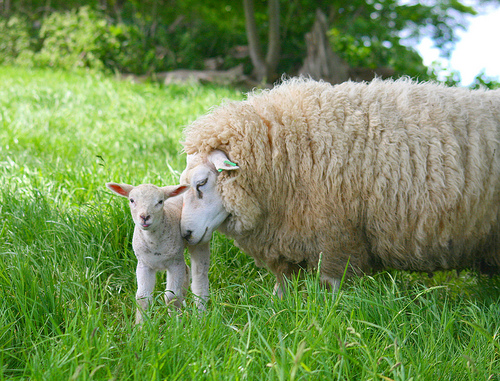How To Choose Eco-Friendly Travel Gear
 In honor of the upcoming Earth Day on April 22, we will be featuring eco-friendly travel gear and tips on choosing Earth friendly gear all week on Travel Gear Blog.
In honor of the upcoming Earth Day on April 22, we will be featuring eco-friendly travel gear and tips on choosing Earth friendly gear all week on Travel Gear Blog.
I will be the first person to admit that I love picking up a new piece of travel gear for an upcoming trip. Until recently I gave very little thought to the environmental impact of such purchases, I only cared about how light and functional the gear is or what a stellar deal I got on it at Steep and Cheap.
The truth is the travel gear industry is totally dependent on oil-based chemicals to produce everything from iPad cases to backpacks and waterproof jackets to quick-dry travel underwear. Huge amounts of crude oil are used to make polyester, nylon, and other synthetic materials resulting in the creation of polluting toxic waste and the release of acid gases, which may contribute to global warming. And I am not even going to get started on all waste created by manufacturing the latest electronic gadgets that keeps us connected and organized on the road.
Well luckily there are plenty of things we can do to reduce the environmental impact of our purchases. We can choose gear with the least environmental impact by choosing gear made from recycled materials or sustainable materials. Choosing environmental friendly gear can really make a difference. It has a direct impact on the amount of raw materials needed to make the item and more indirectly, choosing eco-friendly gear is a statement that Earth friendly products are important to us and will motivate the company to greener ways.
Chose Gear Made From Recycled Materials
 Buying gear made from recycled materials reduces the amount of waste headed to the landfill and conserves resources and the raw materials needed to make products from new materials. Many companies are now incorporating recycled materials into their products.
Buying gear made from recycled materials reduces the amount of waste headed to the landfill and conserves resources and the raw materials needed to make products from new materials. Many companies are now incorporating recycled materials into their products.
Eagle Creek is dedicated to expanding their environmental friendly products and their new eSeries fabric is made from 100% recycled materials like post-consumer and post-industrial nylons and polyesters. The Eagle Creek Traverse Pro is a lightweight wheeled upright bag with a zipoff daypack that has a TSA compliant laptop case and their Hybrid Hauler is perfect for hauling gear in muddy and wet conditions – all made with 100% recycled fabrics. Now their No-Matter-What Duffels are also made with the e Series fabric.
Made from 50% Tier 1 recycled ripstop nylon, the GoLite backpacks have won a Backpacker Magazine’s Editors Choice Green Award for the finest innovation in sustainable fabrics. Backpacker Magazine testers couldn’t not find a difference in durability and performance between the recycled ripstop and virgin, petroleum-produced materials. The GoLite Jam is a pretty sweet ultralight pack and the GoLite Odyssey packs in 78 liters of goods.
Pick Gear Made From Sustainable Materials
 Choosing gear made from renewable materials like cotton and wool can help reduce your footprint. I was shocked to find out that conventionally grown cotton uses almost a quarter of the world’s pesticides. According to the Pesticide Action Network, conventionally grown cotton can pollute waterways, contaminate local food supplies, and threaten the health of both humans and animals. So what can we do? Well we can choose organic cotton wherever possible.
Choosing gear made from renewable materials like cotton and wool can help reduce your footprint. I was shocked to find out that conventionally grown cotton uses almost a quarter of the world’s pesticides. According to the Pesticide Action Network, conventionally grown cotton can pollute waterways, contaminate local food supplies, and threaten the health of both humans and animals. So what can we do? Well we can choose organic cotton wherever possible.
Sustainability pioneer, Patagonia, has been exclusively using 100% organic cotton since 1996. Organic cotton takes more knowledge and skill to grow and currently costs more, but the environmental benefits make it well worth it. Browse Patagonia’s selection of sportswear made from 100% organic cotton.
Choose wool when you’re looking for a quality base layer. Unlike cotton, wool retains its insulation properties when wet plus it naturally wicks moisture away from the skin. Icebreaker uses the best Merino wool available from farms in the mountains of New Zealand. In addition to producing high quality sportswear, Icebreaker maintains high animal welfare standards as well as high respect for nature, ethics, and sustainability. I’ve vowed to choose wool over synthetic materials from here on out. Its superior warmth, comfort, and wicking abilities makes it an easy choice. Only downside is the price, but I am betting my Icebreaker tops will last for nearly ever.
Look For Companies Featuring Green Ratings
 Choose to purchase goods from companies that are being transparent about their environmental impact. At this point, no companies are producing gear with zero impact so be weary of companies claiming to be entirely sustainable. Patagonia has a nifty interactive program called the Footprint Chronicles, where you can view the environmental impact of certain Patagonia products from design through the manufacturing process and distribution. Patagonia admits the area’s it needs to work on and identifies ways they will address their weaknesses.
Choose to purchase goods from companies that are being transparent about their environmental impact. At this point, no companies are producing gear with zero impact so be weary of companies claiming to be entirely sustainable. Patagonia has a nifty interactive program called the Footprint Chronicles, where you can view the environmental impact of certain Patagonia products from design through the manufacturing process and distribution. Patagonia admits the area’s it needs to work on and identifies ways they will address their weaknesses.
Companies like Timberland and GoLite have developed their own indexes for rating the “green-ness” of their products. Both companies have designed an outward facing label that rates the climate impact and the amount of resources consumed for a selection of their products. These ratings both provide information so the consumer can make an informed product decision and offer a tool for the company to continue to work towards more sustainable products.
Choose Used or Refurbished Gear
 Choosing eco-friendly gear may mean choosing no new gear at all. Buying used or refurbished travel gear keeps usable gear out of the landfills plus you can usually find quality gear at only a fraction of the original cost. Check out Gear Trade for camping and hiking gear, outdoor clothing, ski and snowboard gear, and more – plus you can sell the goods you are no longer using as well. Sites like Craigslist and eBay are also great places to find deals on used gear.
Choosing eco-friendly gear may mean choosing no new gear at all. Buying used or refurbished travel gear keeps usable gear out of the landfills plus you can usually find quality gear at only a fraction of the original cost. Check out Gear Trade for camping and hiking gear, outdoor clothing, ski and snowboard gear, and more – plus you can sell the goods you are no longer using as well. Sites like Craigslist and eBay are also great places to find deals on used gear.
[Photo courtesy of law_keven]
How do you choose eco-friendly travel gear?